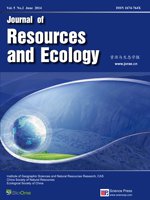As the fast economic development and urban expansion, it is difficult for traditional methods to monitor land use changes in short time interval. Moreover, remotely sensed data acquired by optical sensors is often limited by bad weathers and cloud cover. SAR images, such as RADARSAT-1, are an ideal tool for weather-proof observation on ground surface. This paper analyzed the results of land use change detections with time lags of 24, 48 and 72 days according to the period of acquisition dates of RADARSAT-1. The results need a compromise between accuracies and efficiencies related to the time lags. For most of the situation, it is sufficient of using a time lag of 24 days to obtain accuracy of 60% or above. In some cases of months, a time lag of 48 days is needed. For obtaining higher accuracies, longer time lag such as 72 days is needed.
How to translate text using browser tools
1 June 2014
Short-Interval Land Use Change Detection with Microwave Remote Sensing Data
Chen Xiaoyue
ACCESS THE FULL ARTICLE
<
Previous Article
|

Journal of Resources and Ecology
Vol. 5 • No. 2
June 2014
Vol. 5 • No. 2
June 2014
land use change
RADARSAT-1
remote sensing
short interval




